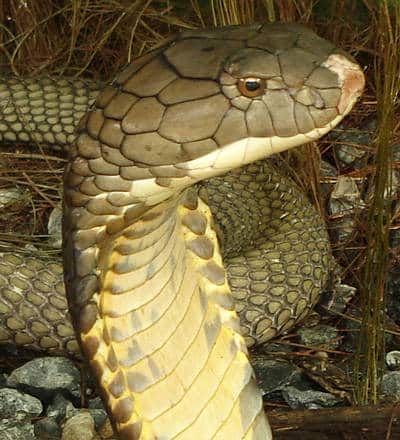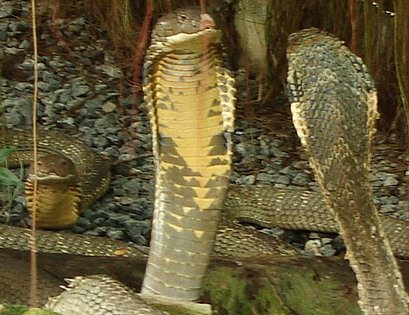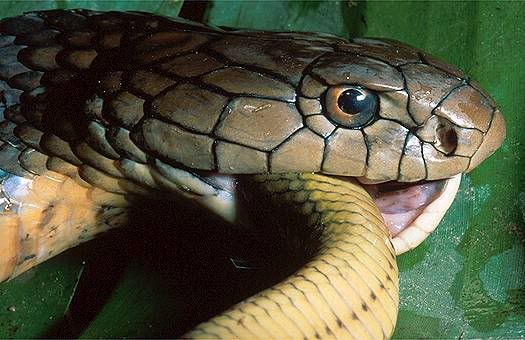 |
| king cobra |
 |
| king cobra |
 |
| king cobra |
 |
| king cobra |
 |
| king cobra |
 |
| king cobra |

The King Cobra Ophiophagus hannah, the world’s largest venomous snake (grows up to 5.85m, Aagaard 1924), is rare, but has wide distribution (David & Vogel 1996). This monotypic genus of the family Elapidae is considered as a species complex by Das (2002), as the species varies in coloration, scalation and body proportion. The King Cobra is distributed in India, Nepal, Bangladesh, Bhutan, Myanmar and most parts of Southeast Asia (David & Vogel 1996; Selich & Kestle 2002). In India, it is distributed in the Western Ghats, Shiwalik and terai regions of Uttarakhand and Uttar Pradesh, Bihar, Orissa, West Bengal, northeastern India and the Andaman Islands (Das 2002; Whittaker & Captain 2004; Ahmed et al. 2009).
 |
| King Cobra |
The King Cobra is listed under Schedule II of the Indian Wildlife (Protection) Act, 1972; Appendix II of CITES; and in the Least Concern category by IUCN (2004). It inhabits thick primary forests and estuarine mangrove swamps with heavy rainfall (Whitaker & Captain 2004) and has been reported to occupy humid jungles with thick undergrowth, cool swamps and bamboo clusters (David & Vogel 1996; Selich & Kestle 2002; Leviton et al. 2003; Anon 2005; Das et al. 2008). In terms of altitudinal distribution, this species is known to inhabit from 150m to 1530m in Nepal (Selich & Kestle 2002), sea level to 1800m in Sumatra (David & Vogel 1996) and has been reported up to 2181m in Mussoori Hills in India (Waltner 1975).
 |
| King Cobra |
In the present paper, we report the sighting of the King Cobra from Yuksam village (27022’12.5’’N & 88013’27.0’’E) bordering Khangchendzonga Biosphere Reserve in the West District of Sikkim, India. The snake was observed in a drain adjoining human settlement (altitude: 1820m) on 06 December 2009 at 0805hr. Images 2, 3 & 4 show various aspects of the snake. It was visually estimated to be about 3−3.5 m in length with all characteristic features clearly distinct. A few days later, the snake was found to have moved a distance of about 200m and taken refuge near Karthok (27022’14.2’’N & 88013’21.2’’E), a sacred lake at an altitude of 1840m and in later days was oftenly seen basking on a rock near bamboo thickets adjoining the lake.
 |
| King Cobra |
There are two highlights of this sighting viz., the new altitude record of 1840m in the entire northeast and the edge of subtropical broadleaved evergreen forest and temperate forests (characterized by the presence of Castanopsis hystrix, Rhododendron arboreum and Symplocos sp. along with bushes of Rubus ellipticus and Edgeworthia gardneri), which may indicate the emergence of a potential habitat for the King Cobra in Sikkim Himalaya, hence needs further study.
 |
| King Cobra |
Prior to this sighting, the species has been reported from Gangtok 1700m in 1923 and was believed to be limited to the tropical forests of Sikkim Himalaya <1250m (Gammie 1928). The species has also been reported from the Teesta Valley, Sikkim at elevations <500m (Chettri & Bhupathy 2007; Chettri et al. 2008). The highest known altitude record for King Cobra in the entire northeastern India was 1700m at Khonoma, Nagaland (Das et al. 2008). Temperate forests of the eastern Himalaya have never been reported as a habitat for the King Cobra as they were in higher altitudes characterized by cold climatic conditions (Ahmed et al. 2009).
There have been very few herpetofaunal surveys in this region as evident from the record of the King Cobra after a gap of 82 years from Sikkim (Gammie 1928; Chettri & Bhupathy 2007; Chettri et al. 2008). Lack of awareness among the local people could also be a disadvantage for the conservation of this species as its status and distribution has not been fully documented. Therefore, we recommend that dedicated surveys be carried out in all four districts of Sikkim to ascertain the present distribution limits and conservation status of the King Cobra and other species of herpetofauna as initiated by Chettri et al. (2008, 2010); and awareness programmes for the local communities to enable them understand the significance of this species and conservation importance of other herpetofauna. This new record of King Cobra in temperate forests and at higher altitudes requires further research.
 |
| king cobra |
 |
| king cobra eating rat |
 |
| king cobra |
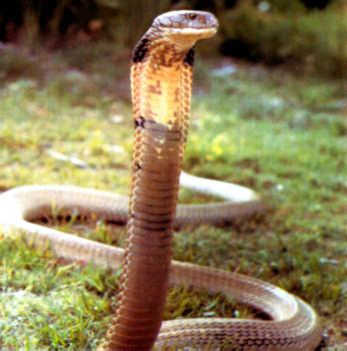 |
| king cobra |
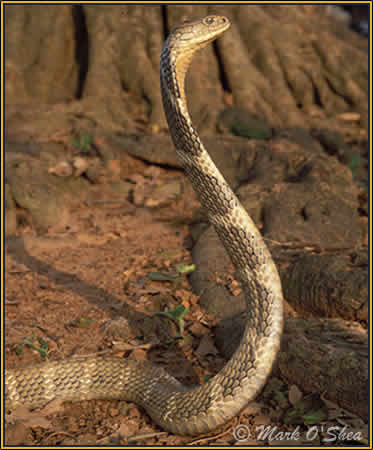 |
| king cobra |
 |
| king cobra |
 |
| king cobra |
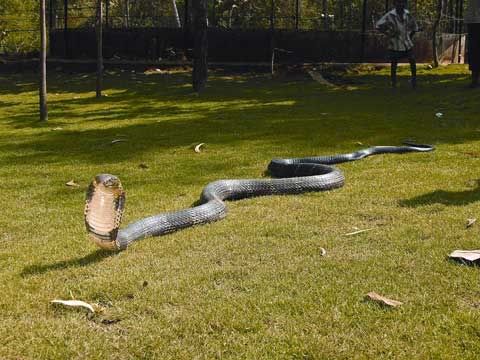 |
| king cobra |
 |
| king cobra |
 |
| snake eating snake |
 |
| snake eating another snake |
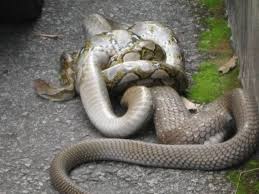 |
| king cobra eating another snake |
 |
| king cobra |
 |
| king cobra |
 |
| king cobra |
 |
| snake eating rat |





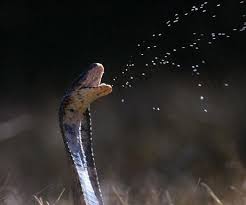


Elvis the recued king cobra now calls Singapore Zoo’s Reptile Garden home. Visitors can see how active he is during the king cobra feeding session every Sunday at 2.15pm

The king cobra can strike up at targets within 2.5 metres, making it extremely easy to misjudge safe distances. Despite its size and reputation for ferocity, it only attacks when startled, provoked or when protecting its eggs.












